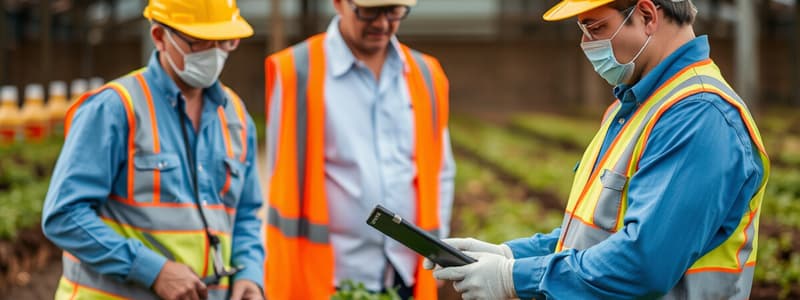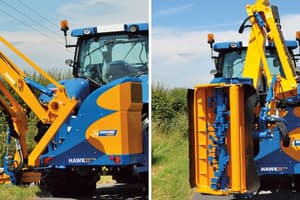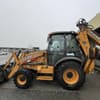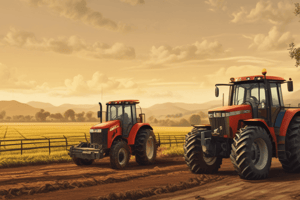Podcast
Questions and Answers
What color signifies danger in safety color coding?
What color signifies danger in safety color coding?
- Orange
- Yellow
- Green
- Red (correct)
Which of the following is NOT a proper safety attire?
Which of the following is NOT a proper safety attire?
- Hard hats
- Loose fitting clothing (correct)
- Safety glasses
- Long sleeves
When should safety guards be removed from equipment?
When should safety guards be removed from equipment?
- During operation for better visibility
- When performing maintenance
- Never (correct)
- Only for cleaning purposes
What should you do if equipment is making strange sounds?
What should you do if equipment is making strange sounds?
What action is advisable before making adjustments to power tools?
What action is advisable before making adjustments to power tools?
What should you do if you need to handle chemicals?
What should you do if you need to handle chemicals?
What type of behavior is prohibited in the lab?
What type of behavior is prohibited in the lab?
What should you do with tools after use?
What should you do with tools after use?
Which of the following is NOT considered a dangerous agricultural occupation?
Which of the following is NOT considered a dangerous agricultural occupation?
Why are agricultural occupations often hazardous?
Why are agricultural occupations often hazardous?
Which option correctly describes PPE?
Which option correctly describes PPE?
What should one do regarding dangers in the agricultural setting?
What should one do regarding dangers in the agricultural setting?
What are common hazards found in animal science facilities?
What are common hazards found in animal science facilities?
Which of the following is an example of a hazard?
Which of the following is an example of a hazard?
What piece of PPE is specifically designed for head protection?
What piece of PPE is specifically designed for head protection?
Which of these protective devices is NOT typically found on agricultural equipment?
Which of these protective devices is NOT typically found on agricultural equipment?
Which of the following hazardous conditions is commonly associated with agricultural worksites?
Which of the following hazardous conditions is commonly associated with agricultural worksites?
Which personal protective equipment is specifically designed to protect the user's eyes?
Which personal protective equipment is specifically designed to protect the user's eyes?
What should individuals do to prepare for potential dangers in agricultural settings?
What should individuals do to prepare for potential dangers in agricultural settings?
What is a common reason why agricultural occupations can be dangerous?
What is a common reason why agricultural occupations can be dangerous?
When working in a greenhouse, which of the following hazards is a concern?
When working in a greenhouse, which of the following hazards is a concern?
What could be classified as a hazard when working with chemicals in an agricultural lab?
What could be classified as a hazard when working with chemicals in an agricultural lab?
Why is it important to know the location of safety equipment on agricultural worksites?
Why is it important to know the location of safety equipment on agricultural worksites?
Which of the following occupations is considered dangerous due to the manual handling of unpredictable animals?
Which of the following occupations is considered dangerous due to the manual handling of unpredictable animals?
What is the primary reason for using safety color coding in a workspace?
What is the primary reason for using safety color coding in a workspace?
Which of the following actions is most appropriate while using power tools?
Which of the following actions is most appropriate while using power tools?
What should you do to ensure a safe working environment regarding haircut?
What should you do to ensure a safe working environment regarding haircut?
Before using any equipment, it is essential to have which of the following?
Before using any equipment, it is essential to have which of the following?
What should one avoid doing when someone is operating equipment?
What should one avoid doing when someone is operating equipment?
What safety measure should be taken when adjusting power tools?
What safety measure should be taken when adjusting power tools?
What is an inappropriate item to have in a lab setting?
What is an inappropriate item to have in a lab setting?
What should be done immediately when using chemicals in the lab?
What should be done immediately when using chemicals in the lab?
Which of the following occupations is associated with being a dangerous agricultural job due to the handling of large equipment?
Which of the following occupations is associated with being a dangerous agricultural job due to the handling of large equipment?
What are the risks involved in agricultural occupations that relate to the work environment?
What are the risks involved in agricultural occupations that relate to the work environment?
Which piece of Personal Protective Equipment (PPE) is essential for protecting the head in high-risk agricultural environments?
Which piece of Personal Protective Equipment (PPE) is essential for protecting the head in high-risk agricultural environments?
In an agricultural lab, which hazard should workers be particularly cautious about?
In an agricultural lab, which hazard should workers be particularly cautious about?
What is a common scenario that increases danger in agricultural workplaces?
What is a common scenario that increases danger in agricultural workplaces?
Which of the following is NOT a typical hazard found in forestry plots?
Which of the following is NOT a typical hazard found in forestry plots?
Which item is NOT considered personal protective equipment for use in agricultural settings?
Which item is NOT considered personal protective equipment for use in agricultural settings?
What type of device is NOT typically utilized on agricultural equipment for safety?
What type of device is NOT typically utilized on agricultural equipment for safety?
Which of the following is essential to wear at all times in the lab?
Which of the following is essential to wear at all times in the lab?
What should be done after using tools in the lab?
What should be done after using tools in the lab?
When is it appropriate to use equipment without prior instruction?
When is it appropriate to use equipment without prior instruction?
What color signifies a warning in safety color coding?
What color signifies a warning in safety color coding?
Which of the following is a recommended action concerning chemicals in the lab?
Which of the following is a recommended action concerning chemicals in the lab?
What behavior is not permitted in the lab environment?
What behavior is not permitted in the lab environment?
Which safety measure should be taken when finishing with power tools?
Which safety measure should be taken when finishing with power tools?
Which of the following is a critical requirement for safe lab work?
Which of the following is a critical requirement for safe lab work?
Study Notes
Dangerous Agricultural Occupations
- Welders, loggers, electricians, livestock producers, farm equipment operators, lab assistants, and landscapers face significant hazards in their work.
Causes of Danger in Agriculture
- Equipment used is often large, loud, and contains many moving parts.
- Workers may handle electricity, hot metal, and power tools.
- Interaction with potentially aggressive animals can pose risks.
- Chemicals in various forms (liquid, dust, granular) are frequently utilized.
- Work environments can be noisy, dusty, hot, and slippery.
- Isolation during work can hinder immediate access to emergency services.
Definitions
- Hazard: A potential source of danger.
- Accident: An unexpected and unintentional incident, often resulting in damage or injury.
Common Hazardous Locations
- Ag Shop: Risks include power tools, sharp edges, loud equipment, and chemical exposure.
- Greenhouse: Hazards include water and electricity, slippery surfaces, and chemicals.
- Lab Stations: Involve dangers from chemicals, glassware, open flames, and fumes.
- Animal Science Facilities: Potential dangers include large animals, chemicals, and heavy equipment.
- Forestry Plot: Risks from insects, snakes, poisonous plants, and tripping hazards.
Safety Practices
- Protect vital functions like sight, hearing, and the use of extremities.
- Develop a healthy respect for dangers by understanding them, rather than fearing them.
Personal Protective Equipment (PPE)
- Appropriate gear includes safety glasses, hearing protection, lab coats, gloves, hard hats, respirators, welding helmets, steel-toed boots, and spray suits.
Safety Equipment Awareness
- Know the location and operation of safety equipment like fire extinguishers, first-aid kits, eye wash stations, and safety showers.
Protective Devices on Equipment
- Utilize guards, safety (kill) switches, and safety color coding to minimize accidents.
Safety Color Coding
- Red signifies danger, orange indicates warning, yellow stands for caution, and green represents safety.
Guidelines for Safe Practices
- Wear proper attire, keeping loose clothing away from equipment; tie back long hair.
- Only use tools and equipment with explicit instruction and permission.
- Maintain guards and safety features while using power tools and only use tools for intended purposes.
- Keep workspaces organized and clear of hazards.
- Never operate damaged or malfunctioning equipment and avoid distractions to those operating machinery.
- Always turn off equipment power before making adjustments and verify chemicals before use.
Lab Conduct Rules
- Adhere to strict safety protocol including wearing approved eye protection, prohibiting food/drink, and ensuring equipment guards remain in place during use.
- Ensure floors are clean and tools are replaced in their designated spots. Avoid running, horseplay, and throwing in the lab.
Dangerous Agricultural Occupations
- Welders, loggers, electricians, livestock producers, farm equipment operators, lab assistants, and landscapers face significant hazards in their work.
Causes of Danger in Agriculture
- Equipment used is often large, loud, and contains many moving parts.
- Workers may handle electricity, hot metal, and power tools.
- Interaction with potentially aggressive animals can pose risks.
- Chemicals in various forms (liquid, dust, granular) are frequently utilized.
- Work environments can be noisy, dusty, hot, and slippery.
- Isolation during work can hinder immediate access to emergency services.
Definitions
- Hazard: A potential source of danger.
- Accident: An unexpected and unintentional incident, often resulting in damage or injury.
Common Hazardous Locations
- Ag Shop: Risks include power tools, sharp edges, loud equipment, and chemical exposure.
- Greenhouse: Hazards include water and electricity, slippery surfaces, and chemicals.
- Lab Stations: Involve dangers from chemicals, glassware, open flames, and fumes.
- Animal Science Facilities: Potential dangers include large animals, chemicals, and heavy equipment.
- Forestry Plot: Risks from insects, snakes, poisonous plants, and tripping hazards.
Safety Practices
- Protect vital functions like sight, hearing, and the use of extremities.
- Develop a healthy respect for dangers by understanding them, rather than fearing them.
Personal Protective Equipment (PPE)
- Appropriate gear includes safety glasses, hearing protection, lab coats, gloves, hard hats, respirators, welding helmets, steel-toed boots, and spray suits.
Safety Equipment Awareness
- Know the location and operation of safety equipment like fire extinguishers, first-aid kits, eye wash stations, and safety showers.
Protective Devices on Equipment
- Utilize guards, safety (kill) switches, and safety color coding to minimize accidents.
Safety Color Coding
- Red signifies danger, orange indicates warning, yellow stands for caution, and green represents safety.
Guidelines for Safe Practices
- Wear proper attire, keeping loose clothing away from equipment; tie back long hair.
- Only use tools and equipment with explicit instruction and permission.
- Maintain guards and safety features while using power tools and only use tools for intended purposes.
- Keep workspaces organized and clear of hazards.
- Never operate damaged or malfunctioning equipment and avoid distractions to those operating machinery.
- Always turn off equipment power before making adjustments and verify chemicals before use.
Lab Conduct Rules
- Adhere to strict safety protocol including wearing approved eye protection, prohibiting food/drink, and ensuring equipment guards remain in place during use.
- Ensure floors are clean and tools are replaced in their designated spots. Avoid running, horseplay, and throwing in the lab.
Dangerous Agricultural Occupations
- Welders, loggers, electricians, livestock producers, farm equipment operators, lab assistants, and landscapers face significant hazards in their work.
Causes of Danger in Agriculture
- Equipment used is often large, loud, and contains many moving parts.
- Workers may handle electricity, hot metal, and power tools.
- Interaction with potentially aggressive animals can pose risks.
- Chemicals in various forms (liquid, dust, granular) are frequently utilized.
- Work environments can be noisy, dusty, hot, and slippery.
- Isolation during work can hinder immediate access to emergency services.
Definitions
- Hazard: A potential source of danger.
- Accident: An unexpected and unintentional incident, often resulting in damage or injury.
Common Hazardous Locations
- Ag Shop: Risks include power tools, sharp edges, loud equipment, and chemical exposure.
- Greenhouse: Hazards include water and electricity, slippery surfaces, and chemicals.
- Lab Stations: Involve dangers from chemicals, glassware, open flames, and fumes.
- Animal Science Facilities: Potential dangers include large animals, chemicals, and heavy equipment.
- Forestry Plot: Risks from insects, snakes, poisonous plants, and tripping hazards.
Safety Practices
- Protect vital functions like sight, hearing, and the use of extremities.
- Develop a healthy respect for dangers by understanding them, rather than fearing them.
Personal Protective Equipment (PPE)
- Appropriate gear includes safety glasses, hearing protection, lab coats, gloves, hard hats, respirators, welding helmets, steel-toed boots, and spray suits.
Safety Equipment Awareness
- Know the location and operation of safety equipment like fire extinguishers, first-aid kits, eye wash stations, and safety showers.
Protective Devices on Equipment
- Utilize guards, safety (kill) switches, and safety color coding to minimize accidents.
Safety Color Coding
- Red signifies danger, orange indicates warning, yellow stands for caution, and green represents safety.
Guidelines for Safe Practices
- Wear proper attire, keeping loose clothing away from equipment; tie back long hair.
- Only use tools and equipment with explicit instruction and permission.
- Maintain guards and safety features while using power tools and only use tools for intended purposes.
- Keep workspaces organized and clear of hazards.
- Never operate damaged or malfunctioning equipment and avoid distractions to those operating machinery.
- Always turn off equipment power before making adjustments and verify chemicals before use.
Lab Conduct Rules
- Adhere to strict safety protocol including wearing approved eye protection, prohibiting food/drink, and ensuring equipment guards remain in place during use.
- Ensure floors are clean and tools are replaced in their designated spots. Avoid running, horseplay, and throwing in the lab.
Studying That Suits You
Use AI to generate personalized quizzes and flashcards to suit your learning preferences.





